This is Part V of a six part series on the newly approved Ely Resource Management Plan, which permanently eliminated almost 1.6 million acres of habitat and over a dozen wild horse Herd Management Areas in the Fall of 2008.
In the 2007 Ely Resource Management Plan (RMP), approximately 11.2 millions acres were reported by BLM as authorized for livestock grazing versus 5.4 million acres for wild horses (now down to 3.7 million acres after high ranking BLM D.C. officials gave the plan two thumbs up!)
BLM also reported there were 142 livestock permittees authorized for 234 allotments via 129 cattle operators and 10 sheep operators. Of these, 9 operators were reported as controlling 87 of the allotments totaling 204,225 Animal Unit Months (AUMs). This equates to 9 operators controlling 38% of the entire Districts livestock authorizations.
While BLM provided the summary statistics cited above, when it comes to how much forage is actually being allocated for livestock use, the numbers became just a tad fuzzy (okay, really fuzzy) as BLM reported a variety of livestock authorizations for the planning District.
In one section of the 2007 RMP, BLM reported forage issued to livestock ranged from 122k to 262k AUMs between 1992 and 2001 as illustrated here:
AUTHORIZED LIVESTOCK GRAZING TABLE (1)
1992 194,823 AUMs…….............……….1997 173,152 AUMs
1993 168,620 AUMs…………............…..1998 271,354 AUMs
1994 165,649 AUMs……………..............1999 256,895 AUMs
1995 153,513 AUMs……………..............2000 258,496 AUMs
1996 122,204 AUMs……………..............2001 262,332 AUMs
Note: BLM reported the huge jump in livestock use between 1997 and 1998 was due to the transference of 98,000 AUMs from the Las Vegas Field Office.
In another section, which provided detailed information about each individual grazing allotment, BLM reported livestock authorizations had now climbed to a whopping 545,267 AUMs by 2007.
Yet in 2005, when BLM published the Preliminary RMP, only 501,405 AUMs was reported as authorized for livestock grazing, which also happens to be the current livestock authorizations obtained last week from BLMs Rangeland Administration System. (However, no current records were found for the Tippett allotment, reported in 2007 as authorizing 12,800 AUMs for both cattle and sheep, so this allotment is missing from the December 2008 total).
Notice too that BLM failed to report livestock authorizations for 2002, 2003, 2004 and 2006 despite the Proposed RMP being published in November 2007.
As only the masters of the shell game can do, while livestock AUMs were going up in 2005, BLM cut 2,880 AUMs of available forage for wild horse use in 2004.
Again, as BLM was reporting the highest livestock authorizations ever at 545,267 AUMs in 2007 (drought, what drought?), they were simultaneously planning another reduction of 5,352 AUMs for wild horses just four years after the last cut.
Livestock grazing allotments affecting the “old” wild horse Herd Management Areas prior to this new decision to re-shuffle, re-name and zero them out currently totals 288,353 AUMs. This is in comparison to the range of 9,720 to 20,340 AUMs now allocated for wild horses in their protected habitat.
Yes, this "range" means BLM has authorized removals until they hit as low as 810 wild horses over 3.7 million acres. This equates to approximately 3% to 7% of the available forage issued just for livestock, never mind the additional forage still available but reserved for wildlife. Including that forage would add about twice as much to the available AUMs BLM is authorizing for livestock use and cause the paltry percentages given to wild horses to plummet even further down the percentage scale.
However, these figures won’t exactly apply anymore as many of the 288k AUMs issued for livestock won’t show up in future comparison analysis between wild horse and livestock authorizations because so many of the “old” HMAs have now been zeroed out.
There was a whole host of other problems with putting together these statistics as well. A big one was the fact that BLM failed to include just what percentage each HMA actually overlapped the grazing allotments affecting it.
One would think after almost 40 years, this basic information would be available somewhere – but it wasn’t - not even in the Environmental Impact Statement that is suppose to provide detailed information for the planning area (you know, the kind of information needed to determine if an area really qualifies for zero wild horses).
So the only way to get a reasonable idea of what the available forage really is, was to find out how much BLM was authorizing for each livestock allotment that overlapped the wild horse HMAs. While I’ll be the first to admit this is not a perfect method, because of BLMs failure to provide such basic information about what is actually happening and affecting these HMAs, it was the best that could be done for now.
Also, it is important to keep in mind that BLM is legally required to formulate management plans that demand, “Wild horses and burros shall be considered comparably with other resource values in the formulation of land use plans” (CFR 4700.0-6) as well as being required to consider the relationships with other uses of both the public and adjacent private lands (CFR 4710.3-1).
In other words, they are suppose to issue relationship oriented decisions that take into account what is occurring both within and outside the Herd Management Areas when they are formulating these plans.
So while BLM failed to report the exact percentage of livestock allotments overlapping each HMA, maybe it’s better to see everything that is happening around the HMAs too. After all, BLM is suppose to evaluate and make decisions based on what is occurring within the entire area, not just cut off it off when they hit the HMA boundaries!
While the whole story has yet to be revealed, here are some other interesting facts and statistics found within the Ely District regarding livestock and wild horse management.
*BLM identified 3,438 miles of fencing erected in the Ely District between 1958 and 2004. The Wilson Creek grazing allotment had 20 springs targeted for fencing between 1993-1995 alone. (It is not known how many were actually implemented.)
*The Henrie Complex livestock allotment, which overlaps the now zeroed out Blue Nose Peak and Meadow Valley HMAs, had been cited for livestock trespasses since November 2004. This is one of four allotments issued to permittee Robert Lewis, all of which BLM filed livestock trespass notices on. It was also the same area BLM conducted Emergency Wild Horse Removals in 2006 due to wildfires. Yet, while livestock were trespassing for two years prior to the “emergency removals” and wild horses were removed to “protect the range”, BLM continued to renew grazing authorizations in all four of Mr. Lewis’s allotments with no suspended AUMs; BLM merely required Mr. Lewis to “keep livestock from the burned portions of the allotments.”
*The Henrie Complex, as well as Mr. Lewis other allotments, contains another very interesting feature; they are all part of multiple livestock allotments occurring just outside and around Areas of Critical Environmental Concern set aside for Desert Tortoise protection. Still, the new RMP continued to approve livestock authorizations for these allotments totaling 40,015 AUMs, enough to feed 3,334 wild horses year round.
Oh yea, one more thing; almost every single one of these allotments still hasn’t been evaluated by BLM for Rangeland Health Standards but rest assured, the Desert Tortoise is now safe because the real threat, wild horses, have been eradicated!
*The Little Mountain grazing allotment overlapping the now zeroed out Little Mountain HMA was reported by BLM as being “relinquished” due to Desert Tortoise issues in the 2007 RMP. However, BLMs current grazing authorizations downloaded just last week now show 399 active AUMs have been issued for 66 cattle between 5/01 to 10/31 (Authorization #2705049), the equivalent of 33 wild horses year round. The AML BLM had formerly established for the Little Mountain HMA was 15 wild horses.
*The now zeroed out Applewhite HMA corresponds identically to the Applewhite grazing allotment, still authorized year round for 47 head of cattle, despite it too failing to be evaluated for Rangeland Health Standards.
*While BLM was approving the removal of 65,500 acres from the former Highland Peak HMA due to its “unsuitability”, in March, May, June and December 2008, they were also busy approving 8,709 AUMs for livestock use in four separate grazing allotments that overlap it and permittees continue to run 6,652 sheep and 293 cattle at various times throughout the year.
*The now zeroed out Delamar Mountains HMA is currently authorized for 16,154 AUMs for exclusive livestock use and runs at least 464 cattle year round, despite it also failing to be evaluated for Rangeland Health Standards. While BLM did report forage, water, cover and space were adequate in the Delamar Mountain HMA for wild horses, the excuse BLM used to zero it out was the AML of 51-85 wild horses (set by BLM) failed to represent a genetically viable herd.
*The grazing allotments affecting the now zeroed out Jakes Wash (formerly approved for 31 wild horses) are currently authorized for 13,855 AUMs with a total of 2,075 cattle and 3,131 sheep being run throughout the year (enough forage to feed 1,154 wild horses) and allotments affecting the now zeroed out Seaman HMA (formerly approved for 159 wild horses) are still doling out a generous 17,182 AUMs for exclusive livestock use (enough to feed 1,431 wild horses).
*The Wilson Creek grazing allotment, which spans almost 1.1 million acres and affects both the Dry Lake HMA (now known as Silver King) and the Wilson Creek HMA (now known as Eagle) was such a complicated disaster, an entire report had to be prepared just to begin to get an idea of what might be really going on there. Though still incomplete, Click Here to learn more.
By the way, many of the Wilson Creek grazing allotments have now been bought up by the Southern Nevada Water Authority, so we can expect much of Wilson Creeks water to soon be piped to Las Vegas to support a new “thriving ecological balance” instead.
*In 1991, BLM issued a report for the Wilson Creek Allotment that established the current wild horse AMLs. With regards to the Patterson Seedings pasture, BLM stated this portion of the allotment was not within the Wilson Creek HMA and therefore all wild horses would be removed. However, in reviewing a map overlay of current allotments, approximately 50% of the Patterson Seeding pasture overlapped the Patterson/Eagle Herd Area, now known as the Wilson Creek HMA. (Do you think the name Patterson/Eagle Herd Area gave away the fact that wild horses were actually on the allotment in 1971 at the passage of the Act and that’s why BLM changed the name to Wilson Creek?)
BLM stated Patterson Seeding pasture had been fenced prior to the passage of the Act and though four separate appeals were filed with the Interior Board of Land Appeals, IBLA specifically affirmed this would be a Horse Free Area (IBLA decision 89-206, 90-243), despite it sitting smack dab in the middle of wild horse territory on every side.
*Regarding wild horse utilization levels, in the same 1991 report BLM used a desired utilization rate of 30% for wild horses on riparian areas in the Muleshoe/Maloy/Fairview areas as the basis for determining the areas wild horse AML. Yet BLM also cited riparian “objectives” included, “limit[ing] use on wet meadows and stream riparian areas in less than good condition to 30 percent for grass and grass-like species by all animals yearlong….” BLM went on to add they would use the same 30% limitations within pronghorn antelope kidding grounds too.
So how does that work, wild horse AMLs being established for a 30% utilization level while simultaneously restricting utilization levels to 30% for all animals?
BLM also reported there were 142 livestock permittees authorized for 234 allotments via 129 cattle operators and 10 sheep operators. Of these, 9 operators were reported as controlling 87 of the allotments totaling 204,225 Animal Unit Months (AUMs). This equates to 9 operators controlling 38% of the entire Districts livestock authorizations.
While BLM provided the summary statistics cited above, when it comes to how much forage is actually being allocated for livestock use, the numbers became just a tad fuzzy (okay, really fuzzy) as BLM reported a variety of livestock authorizations for the planning District.
In one section of the 2007 RMP, BLM reported forage issued to livestock ranged from 122k to 262k AUMs between 1992 and 2001 as illustrated here:
AUTHORIZED LIVESTOCK GRAZING TABLE (1)
1992 194,823 AUMs…….............……….1997 173,152 AUMs
1993 168,620 AUMs…………............…..1998 271,354 AUMs
1994 165,649 AUMs……………..............1999 256,895 AUMs
1995 153,513 AUMs……………..............2000 258,496 AUMs
1996 122,204 AUMs……………..............2001 262,332 AUMs
Note: BLM reported the huge jump in livestock use between 1997 and 1998 was due to the transference of 98,000 AUMs from the Las Vegas Field Office.
In another section, which provided detailed information about each individual grazing allotment, BLM reported livestock authorizations had now climbed to a whopping 545,267 AUMs by 2007.
Yet in 2005, when BLM published the Preliminary RMP, only 501,405 AUMs was reported as authorized for livestock grazing, which also happens to be the current livestock authorizations obtained last week from BLMs Rangeland Administration System. (However, no current records were found for the Tippett allotment, reported in 2007 as authorizing 12,800 AUMs for both cattle and sheep, so this allotment is missing from the December 2008 total).
Notice too that BLM failed to report livestock authorizations for 2002, 2003, 2004 and 2006 despite the Proposed RMP being published in November 2007.
As only the masters of the shell game can do, while livestock AUMs were going up in 2005, BLM cut 2,880 AUMs of available forage for wild horse use in 2004.
Again, as BLM was reporting the highest livestock authorizations ever at 545,267 AUMs in 2007 (drought, what drought?), they were simultaneously planning another reduction of 5,352 AUMs for wild horses just four years after the last cut.
Livestock grazing allotments affecting the “old” wild horse Herd Management Areas prior to this new decision to re-shuffle, re-name and zero them out currently totals 288,353 AUMs. This is in comparison to the range of 9,720 to 20,340 AUMs now allocated for wild horses in their protected habitat.
Yes, this "range" means BLM has authorized removals until they hit as low as 810 wild horses over 3.7 million acres. This equates to approximately 3% to 7% of the available forage issued just for livestock, never mind the additional forage still available but reserved for wildlife. Including that forage would add about twice as much to the available AUMs BLM is authorizing for livestock use and cause the paltry percentages given to wild horses to plummet even further down the percentage scale.
However, these figures won’t exactly apply anymore as many of the 288k AUMs issued for livestock won’t show up in future comparison analysis between wild horse and livestock authorizations because so many of the “old” HMAs have now been zeroed out.
There was a whole host of other problems with putting together these statistics as well. A big one was the fact that BLM failed to include just what percentage each HMA actually overlapped the grazing allotments affecting it.
One would think after almost 40 years, this basic information would be available somewhere – but it wasn’t - not even in the Environmental Impact Statement that is suppose to provide detailed information for the planning area (you know, the kind of information needed to determine if an area really qualifies for zero wild horses).
So the only way to get a reasonable idea of what the available forage really is, was to find out how much BLM was authorizing for each livestock allotment that overlapped the wild horse HMAs. While I’ll be the first to admit this is not a perfect method, because of BLMs failure to provide such basic information about what is actually happening and affecting these HMAs, it was the best that could be done for now.
Also, it is important to keep in mind that BLM is legally required to formulate management plans that demand, “Wild horses and burros shall be considered comparably with other resource values in the formulation of land use plans” (CFR 4700.0-6) as well as being required to consider the relationships with other uses of both the public and adjacent private lands (CFR 4710.3-1).
In other words, they are suppose to issue relationship oriented decisions that take into account what is occurring both within and outside the Herd Management Areas when they are formulating these plans.
So while BLM failed to report the exact percentage of livestock allotments overlapping each HMA, maybe it’s better to see everything that is happening around the HMAs too. After all, BLM is suppose to evaluate and make decisions based on what is occurring within the entire area, not just cut off it off when they hit the HMA boundaries!
While the whole story has yet to be revealed, here are some other interesting facts and statistics found within the Ely District regarding livestock and wild horse management.
*BLM identified 3,438 miles of fencing erected in the Ely District between 1958 and 2004. The Wilson Creek grazing allotment had 20 springs targeted for fencing between 1993-1995 alone. (It is not known how many were actually implemented.)
*The Henrie Complex livestock allotment, which overlaps the now zeroed out Blue Nose Peak and Meadow Valley HMAs, had been cited for livestock trespasses since November 2004. This is one of four allotments issued to permittee Robert Lewis, all of which BLM filed livestock trespass notices on. It was also the same area BLM conducted Emergency Wild Horse Removals in 2006 due to wildfires. Yet, while livestock were trespassing for two years prior to the “emergency removals” and wild horses were removed to “protect the range”, BLM continued to renew grazing authorizations in all four of Mr. Lewis’s allotments with no suspended AUMs; BLM merely required Mr. Lewis to “keep livestock from the burned portions of the allotments.”
*The Henrie Complex, as well as Mr. Lewis other allotments, contains another very interesting feature; they are all part of multiple livestock allotments occurring just outside and around Areas of Critical Environmental Concern set aside for Desert Tortoise protection. Still, the new RMP continued to approve livestock authorizations for these allotments totaling 40,015 AUMs, enough to feed 3,334 wild horses year round.
Oh yea, one more thing; almost every single one of these allotments still hasn’t been evaluated by BLM for Rangeland Health Standards but rest assured, the Desert Tortoise is now safe because the real threat, wild horses, have been eradicated!
*The Little Mountain grazing allotment overlapping the now zeroed out Little Mountain HMA was reported by BLM as being “relinquished” due to Desert Tortoise issues in the 2007 RMP. However, BLMs current grazing authorizations downloaded just last week now show 399 active AUMs have been issued for 66 cattle between 5/01 to 10/31 (Authorization #2705049), the equivalent of 33 wild horses year round. The AML BLM had formerly established for the Little Mountain HMA was 15 wild horses.
*The now zeroed out Applewhite HMA corresponds identically to the Applewhite grazing allotment, still authorized year round for 47 head of cattle, despite it too failing to be evaluated for Rangeland Health Standards.
*While BLM was approving the removal of 65,500 acres from the former Highland Peak HMA due to its “unsuitability”, in March, May, June and December 2008, they were also busy approving 8,709 AUMs for livestock use in four separate grazing allotments that overlap it and permittees continue to run 6,652 sheep and 293 cattle at various times throughout the year.
*The now zeroed out Delamar Mountains HMA is currently authorized for 16,154 AUMs for exclusive livestock use and runs at least 464 cattle year round, despite it also failing to be evaluated for Rangeland Health Standards. While BLM did report forage, water, cover and space were adequate in the Delamar Mountain HMA for wild horses, the excuse BLM used to zero it out was the AML of 51-85 wild horses (set by BLM) failed to represent a genetically viable herd.
*The grazing allotments affecting the now zeroed out Jakes Wash (formerly approved for 31 wild horses) are currently authorized for 13,855 AUMs with a total of 2,075 cattle and 3,131 sheep being run throughout the year (enough forage to feed 1,154 wild horses) and allotments affecting the now zeroed out Seaman HMA (formerly approved for 159 wild horses) are still doling out a generous 17,182 AUMs for exclusive livestock use (enough to feed 1,431 wild horses).
*The Wilson Creek grazing allotment, which spans almost 1.1 million acres and affects both the Dry Lake HMA (now known as Silver King) and the Wilson Creek HMA (now known as Eagle) was such a complicated disaster, an entire report had to be prepared just to begin to get an idea of what might be really going on there. Though still incomplete, Click Here to learn more.
By the way, many of the Wilson Creek grazing allotments have now been bought up by the Southern Nevada Water Authority, so we can expect much of Wilson Creeks water to soon be piped to Las Vegas to support a new “thriving ecological balance” instead.
*In 1991, BLM issued a report for the Wilson Creek Allotment that established the current wild horse AMLs. With regards to the Patterson Seedings pasture, BLM stated this portion of the allotment was not within the Wilson Creek HMA and therefore all wild horses would be removed. However, in reviewing a map overlay of current allotments, approximately 50% of the Patterson Seeding pasture overlapped the Patterson/Eagle Herd Area, now known as the Wilson Creek HMA. (Do you think the name Patterson/Eagle Herd Area gave away the fact that wild horses were actually on the allotment in 1971 at the passage of the Act and that’s why BLM changed the name to Wilson Creek?)
BLM stated Patterson Seeding pasture had been fenced prior to the passage of the Act and though four separate appeals were filed with the Interior Board of Land Appeals, IBLA specifically affirmed this would be a Horse Free Area (IBLA decision 89-206, 90-243), despite it sitting smack dab in the middle of wild horse territory on every side.
*Regarding wild horse utilization levels, in the same 1991 report BLM used a desired utilization rate of 30% for wild horses on riparian areas in the Muleshoe/Maloy/Fairview areas as the basis for determining the areas wild horse AML. Yet BLM also cited riparian “objectives” included, “limit[ing] use on wet meadows and stream riparian areas in less than good condition to 30 percent for grass and grass-like species by all animals yearlong….” BLM went on to add they would use the same 30% limitations within pronghorn antelope kidding grounds too.
So how does that work, wild horse AMLs being established for a 30% utilization level while simultaneously restricting utilization levels to 30% for all animals?
If anyone thinks Obama’s pick for our new Secretary of the Interior, Colorado Senator Ken Salazar, will be giving the Ely Districts wild horses and the new “thriving ecological balance” a fair hearing, think again.
Senator Salazar has a long and active history of supporting livestock domination on public lands (he accepted the nomination dressed in a cowboy hat and a bolero!) and we only have to look at what’s been happening to public lands in Colorado, as well as their wild horse statistics, to get an idea of what the future holds under Sala-Czar’s leadership.
He also enthusiastically supported former Secretary of the Interior Gail Norton, now known for leaving a legacy of corruption, political meddling and twisted policies that are still being exposed and under investigation today. So much for his ability to judge both character and sound public policy….
Sala-Czar can also be counted as one who voted against reversing the Burns Amendment to repeal the sale of wild horses and burros for slaughter and the grapevine reports ~ he HATES wild horses with a passion! Click Here to read more of Sala-Czar's checkboard past.
And so, in this promised time of “change”, the Magicians behind public lands exploitation are again poised in our “new” ObamaNation to continue practicing their art of deception on both the American people and our vanishing herds.
For a more in depth analysis of each individual HMA
and their overlapping grazing allotments,
Click Here.
Senator Salazar has a long and active history of supporting livestock domination on public lands (he accepted the nomination dressed in a cowboy hat and a bolero!) and we only have to look at what’s been happening to public lands in Colorado, as well as their wild horse statistics, to get an idea of what the future holds under Sala-Czar’s leadership.
He also enthusiastically supported former Secretary of the Interior Gail Norton, now known for leaving a legacy of corruption, political meddling and twisted policies that are still being exposed and under investigation today. So much for his ability to judge both character and sound public policy….
Sala-Czar can also be counted as one who voted against reversing the Burns Amendment to repeal the sale of wild horses and burros for slaughter and the grapevine reports ~ he HATES wild horses with a passion! Click Here to read more of Sala-Czar's checkboard past.
And so, in this promised time of “change”, the Magicians behind public lands exploitation are again poised in our “new” ObamaNation to continue practicing their art of deception on both the American people and our vanishing herds.
For a more in depth analysis of each individual HMA
and their overlapping grazing allotments,
Click Here.




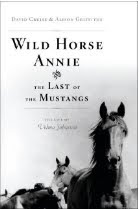








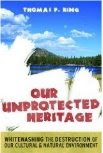



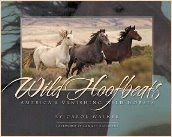




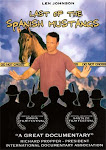





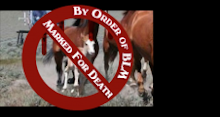
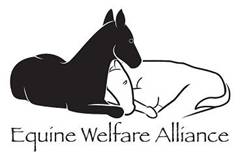
1 comment:
Merry Christmas, AH. On behalf of the wild horses of America, thank you for your dedication.
Post a Comment